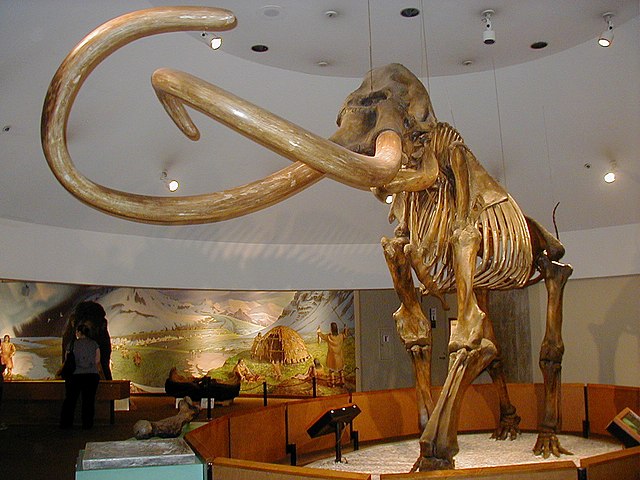 The skeleton of the Columbian mammoth, Mammuthus columbi, in the George C. Page Museum at the La Brea Tar Pits. Credit: WolfmanSF / Wikimedia Commons / CC BY-SA 3.0
The skeleton of the Columbian mammoth, Mammuthus columbi, in the George C. Page Museum at the La Brea Tar Pits. Credit: WolfmanSF / Wikimedia Commons / CC BY-SA 3.0A large meatball created from flesh grown using the DNA of a prehistoric animal has been revealed at a science museum in the Netherlands called Nemo. The meatball was made by a company called Vow, based in Australia, that creates cultured meat.
Vow’s co-founder, Tim Noakesmith said, “We wanted to create something that was totally different from anything you can get now.” He went on to say that another rationale for picking the mammoth was the widespread consensus among experts that the demise of the mammoth was brought on by a warming planet.
“We face a similar fate if we don’t do things differently,” Noakesmith added. Vow aims to encourage conversations about cultured meat and highlights it as a more environmentally-friendly alternative to traditional meat.
Gene of Mammoth ‘Myoglobin’
The meatball was made from cells of sheep that were modified using one gene from a mammoth called myoglobin. James Ryall, the Chief Scientific Officer of Vow said, “When it comes to meat, myoglobin is responsible for the aroma, the color and the taste.”
The Vow team also inserted DNA from an African elephant to fill in the missing parts of the mammoth’s DNA sequence that they obtained.
While the process of creating cultured meat usually involves using blood from a calf, Vow found an alternative approach, meaning that no animals were harmed during the creation of the mammoth meatball.
It’s worth noting that this meatball has a smell similar to crocodile meat, but it’s not available for consumption at the moment.
According to Noakesmith, “Its protein is literally 4,000 years old. We haven’t seen it in a very long time. That means we want to put it through rigorous tests, something that we would do with any product we bring to the market.”
It is essential to be aware that the consumption of cultured meat in the European Union is not controlled in any way.
Lab-Created Meat Alternatives
As a direct consequence of this, a significant number of researchers have started investigating other methods of producing meat, such as alternatives based on plants and meat created in the laboratory.
The gigantic meatball presentation highlights the connection between climate change and the food we may eat in the future. This is essential, because the amount of meat people eat worldwide has almost doubled since the 1960s, according to the United Nations’ Food and Agriculture Organization.
A giant meatball made from flesh cultivated using the DNA of an extinct woolly mammoth was unveiled on Tuesday at Nemo, a science museum in the Netherlands. pic.twitter.com/NUw84pX4ga
— Zoey Jiang (@ZoeyJia61415023) March 29, 2023
The FAO reported that raising animals for food contributes to 14.5% of human-caused greenhouse gas emissions globally. This is an alarming figure, given that the planet’s temperature is getting warmer due to climate change.
If we continue to consume meat at the current rate, it is estimated that by 2050, we will eat 70% more meat than we do today. This has led researchers to explore alternatives such as plant-based meats and lab-grown meat to satisfy the growing demand while also reducing the impact on the environment.

 1 year ago
72
1 year ago
72











 English (US)
English (US)